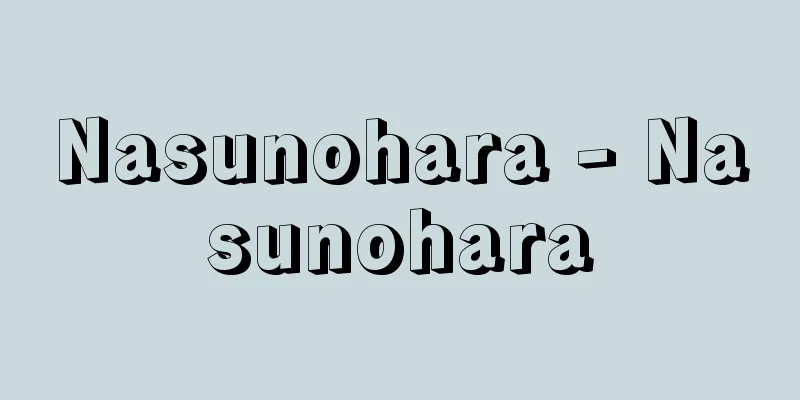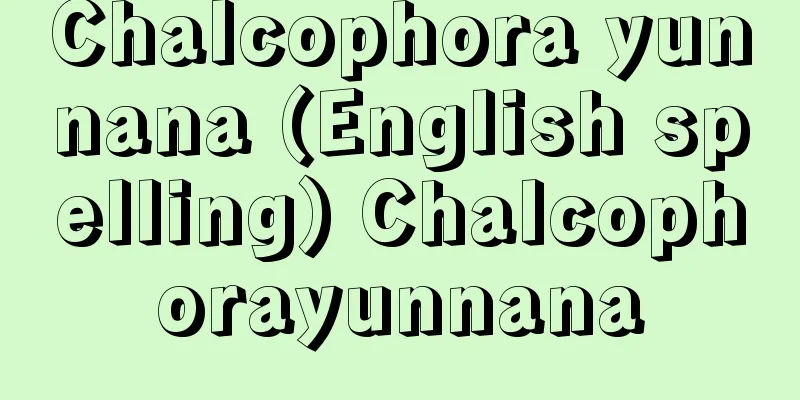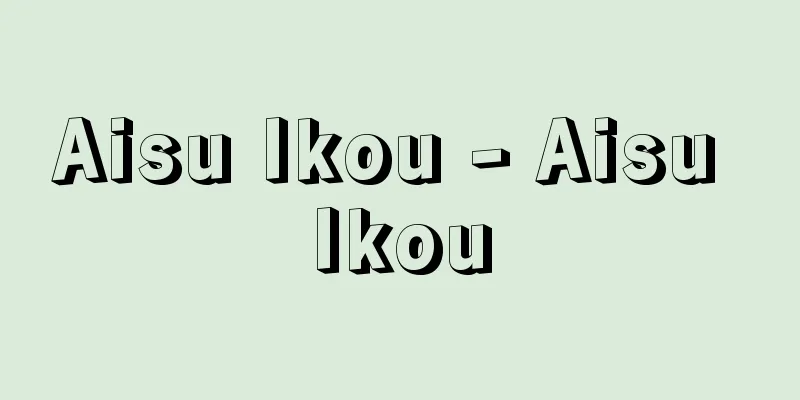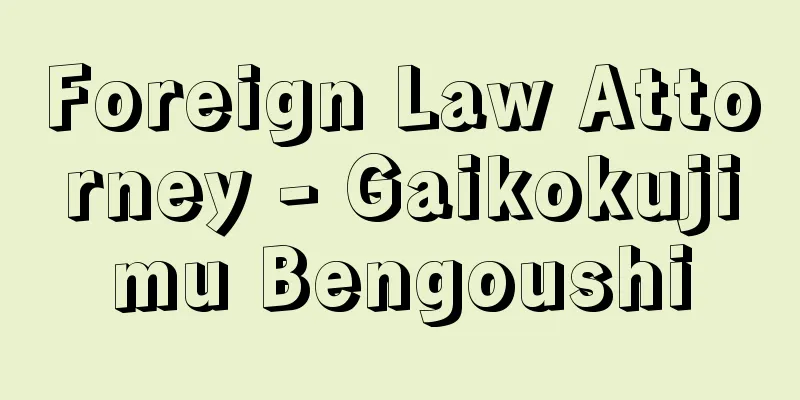Kaiseisho - Kaiseisho
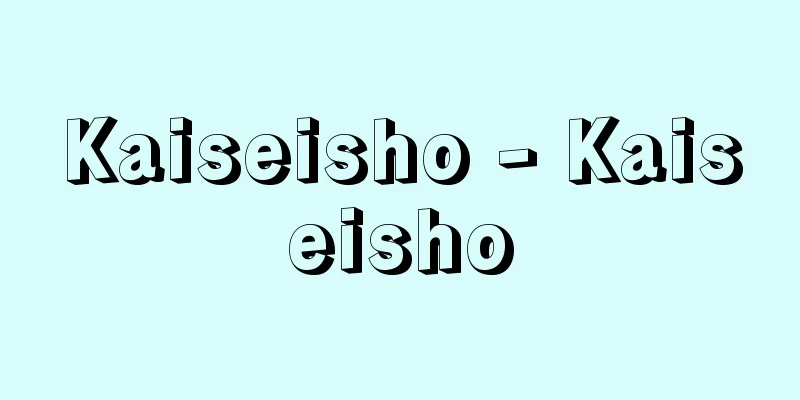
|
A Western studies research and educational institute of the Edo Shogunate. In the context of foreign affairs around the time of the opening of Japan to the world, the Shogunate established the Bansho Shirabesho (Institute for the Investigation of Foreign Books) in 1856 (Ansei 3) with the mission of researching and teaching Western studies and translating Western books. As the institute developed, it was renamed the Yosho Shirabesho in 1862 (Bunkyu 2), and the Kaiseisho in 1863. The institute had departments for four languages (Dutch, English, French, and German), chemistry, mechanical engineering, product science, mathematics, painting, and typography, and research and education were conducted by professors and students who were Shogunate vassals and subordinate vassals. There were also many noteworthy activities by volunteer professors, such as the humanities and social science research of Nishi Amane and Kato Hiroyuki, the formation of a translation company by Yanagawa Shunsan and others, and the publication of the Western Magazine. During the Keio era (1865-1868), Kaiseisho had strong ties with the newly established military organization, taking charge of part of the education of officers and cooperating with military technology reform. During this period, the school's research and education were further developed and expanded through reforms in the education system and the annexation of the Bunseki Kenri-sho, which was attached to the Nagasaki Seitokukan. After the Meiji Restoration, the school was transferred to the Meiji government in June 1868 (Keio 4), and reopened in September of the same year. It later became Daigaku Nanko and Tokyo Kaisei School, and in 1877 (Meiji 10), it was merged with Tokyo Medical School to become the University of Tokyo. [Fumiko Miyazaki] "Japanese Universities" by Toshiaki Okubo (1943, Sogensha) " A History of Western Studies at the End of the Tokugawa Period" by Jiro Numata (1950, Tonoshoin) "A History of the Introduction of Western Studies" by Jiro Numata (1960, Shibundo) [Reference] |Source: Shogakukan Encyclopedia Nipponica About Encyclopedia Nipponica Information | Legend |
|
江戸幕府の洋学研究教育機関。開国前後の対外問題を背景に、幕府は洋学研究・教育や洋書翻訳を任務とする蕃書調所(ばんしょしらべしょ)を設け、1856年(安政3)開業させた。同所は発展に応じて、1862年(文久2)洋書調所、1863年開成所と改称した。ここには蘭(らん)・英・仏・独4か国語、化学、器械学、物産学、数学、画学、活字の各科が設けられ、幕臣・陪臣の教授方と生徒により研究・教育が行われた。また西周(にしあまね)、加藤弘之(ひろゆき)らの人文・社会科学研究、柳河春三(やながわしゅんさん)らの会訳社結成、『西洋雑誌』発刊など、教授方有志の活動にもみるべきものが多い。慶応(けいおう)年間(1865~1868)開成所は新設の軍事組織と強い結び付きをもち、士官教育の一部を担当したり、軍事技術改革に協力した。またこの時期には学制改革や長崎精得館付属だった分析究理所の併合などにより、研究・教育面のいっそうの整備・拡充が進行した。維新後1868年(慶応4)6月、同所は明治政府に移管され、同9月再開された。その後、大学南校、東京開成学校となり、1877年(明治10)東京医学校と合併されて東京大学となった。 [宮崎ふみ子] 『大久保利謙著『日本の大学』(1943・創元社)』▽『沼田次郎著『幕末洋学史』(1950・刀江書院)』▽『沼田次郎著『洋学伝来の歴史』(1960・至文堂)』 [参照項目] |出典 小学館 日本大百科全書(ニッポニカ)日本大百科全書(ニッポニカ)について 情報 | 凡例 |
<<: Kaixi Jorgensen - Kaisei Jorgensen
Recommend
Prince Toneri - Prince Toneri
Year of death: Tempyo 7.11.14 (735.12.2) Year of b...
Eckert, F.
...Around 1869 (Meiji 2), J.W. Fenton, the Britis...
Hardness - Hardness (English spelling)
Hardness is one of the mechanical properties of m...
Probation - probation
A disposition in which a person who has committed...
Mauléon (English spelling)
…There are three former provinces: Soule in the s...
Egg rolling
...Especially on Easter, people would give each o...
《Cosmology》 - Spaceman
…German mathematician and assomologist. His real ...
Senior Citizens Club - Roujin Club
A voluntary organization whose members are elderly...
Oie-ryu (Incense Ceremony) - Oie-ryu
… [school] In the tradition of the incense arts, ...
Karaitosou - Spicy pea
A perennial plant of the Rosaceae family (APG cla...
Korea - Challenge
A region consisting of a peninsula that juts out ...
Keir, J.
...Its origins lie in the monthly colloquies held...
Aulos - Aulos (English spelling)
An ancient Greek aerophone. A double-reed instrum...
Mount Kasagi
<br /> A mountain in Kasagi, Kasagi-cho, Sor...
Wolf (music) - Urufu
…This allows for the first time enharmonic modula...
![Hinase [town] - Hinase](/upload/images/67cc9fd044f5d.webp)


